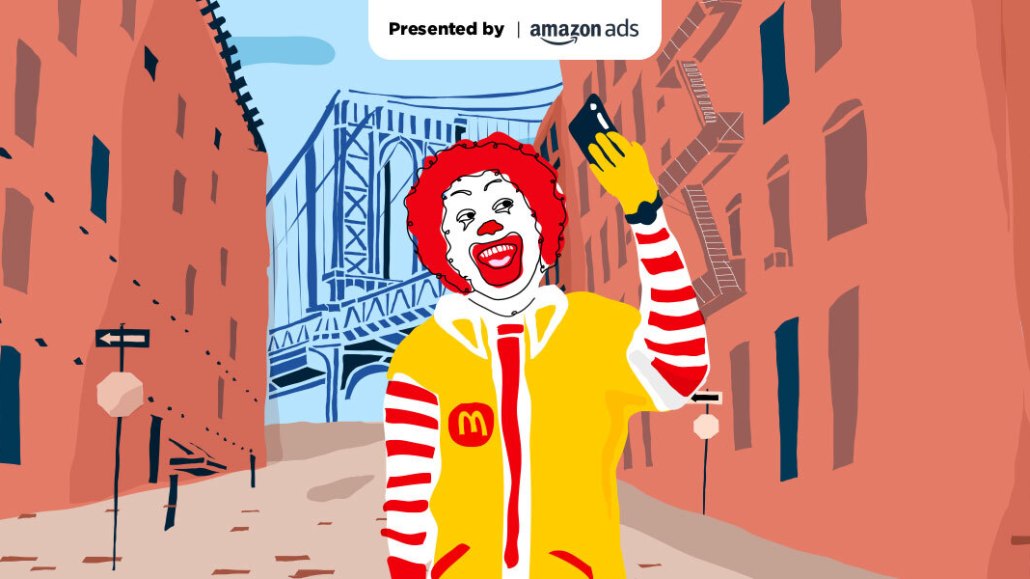Save 50% on a 3-month Digiday+ membership. Ends Dec 12.
Advertising Week Briefing: Despite darkening economy, marketers put measurement, brand safety center stage

Keep up to date with Digiday’s annual coverage of Advertising Week in New York. More from the series →
Despite ongoing societal concerns about everything from inflation and the overall economy to the war and the pandemic, old issues dogging advertisers are still front and center at this year’s Advertising Week. Ongoing concerns around brand safety, measurement issues, capturing attention and navigating the media landscape were all key areas of discussion across various stages so far this week.
From mobile devices to connected TVs, reaching and measuring audiences across various screens continues to be an area in which marketers are experimenting. Kreg Elsass, brand director at Scotts Miracle-Gro, said targeting some products to audiences based on how they think and feel when they see the ads has been successful and led the company to expand the strategy to other products.
Tim Natal, digital analytics leader at AstraZeneca, said finding new ways of measurement and targeting has helped the company to become more prospective rather than only analyzing marketing afterward. Natal is not alone. “The whole convergence [of digital and TV] is forcing us to rethink how we are planning and how we are measuring,” said Esra Bacher, managing partner and programmatic investment lead at GroupM.
Brand safety, another longstanding issue, also got a spotlight. But rather than just being a concern on social media, some marketers say the audio category — in particular podcasts — has room for improvement. For example, agency and brand executives alike say they’d like to see more granular capabilities around the types of content they can avoid.
Mark Proulx, senior manager for brand safety and marketing data compliance at Johnson & Johnson, said he’d like to have ways of avoiding specific podcast shows or even specific episodes or parts of an episode. Others say analyzing the transcript of a show could help advertisers determine if they want to avoid a show based on the context or tone of a text. Sara Tehrani, vice president of global digital partnerships and media responsibility at MAGNA Global, said she’d like to see platforms be more proactive when it comes to adding new capabilities.
The results might end up benefiting more than audio platforms. David Byrne, Spotify’s director of global advertising brand safety, noted that the same uses could apply to other non-text formats such as video. He also encouraged companies to “please hold us accountable.”
“I don’t think there’s any platform that has ever regretted investing in safety,” Byrne said. “Any platform that has invested in safety has grown their business … Once we get this infrastructure in place, everybody benefits.”
Political advertisers deal with the same issues brands do
Issues that consumer brands deal with are similar to challenges faced by political advertisers. Ahead of the midterm elections next month, marketers working with candidates on both sides of the aisle say they’re seeing campaigns spend more this year on CTV than in past political seasons. Meanwhile, privacy changes are forcing campaigns to be a lot more specific with who they reach even as it becomes more expensive. Mark Jablonowski, president of ad tech shop DSPolitical, said political advertisers are relying more on first-party data such as voter files, which he described as a “platinum-level CRM.” Although viewership and technology of CTV platforms have caught up with the desires of political advertisers, he said the fragmented publisher landscape still makes it difficult to have cohesive buying power.
“We’re giving less credence to where it’s running — whether it’s on a specific program — and really more about who is seeing the ad,” Jablonowski said.
Lack of swag
Despite the fact that many brands are in attendance at Advertising Week New York, there aren’t many — or any — swag bags. At least, the swag isn’t nearly as present as it has been in previous years. (Digiday previously reported on the lackluster state of the swag bag among media companies at NewFronts.) Here, various brands have been doling out popcorn, candy, pretzels, a pack of cards and water bottles but not much else. Maybe a sign that the ongoing pandemic and economic uncertainty has made the brands scaling back. — Julian Cannon
Coming up
9:15 am Making Actionable Changes Toward Sustainable Advertising, The Innovation Factory
9:30 am Navigating a Cookieless World with Better Data, The Tech Lab
11:15 am The Business of Breaking Through: Women Share Lessons on Owning an Agency, The Marketplace
11:30 am Your Next Hire: Chief Culture Officer, The Boardroom
12:35 pm Moments are the New Cookies, The Insights Arena
2:35 pm Impressions Aren’t Created Equal: What You Oughta Know About Video Measurement, The Screening Room
More in Marketing

How Costco stood against Trump’s agenda on tariffs, DEI this year
Costco has continuously been held up as an example of a company that has stood firm in its willingness to do what it believes is best for the business.

Brands look to experiential marketing as antidote to AI slop, digital fatigue
Brands are prioritizing experiential and IRL marketing as an antidote to ‘AI slop’ and digital fatigue.

Agencies push curation upstream, reclaiming control of the programmatic bidstream
Curation spent much of this year in a fog, loosely defined and inconsistently applied. Agencies say they plan to tighten the screws in 2026.





